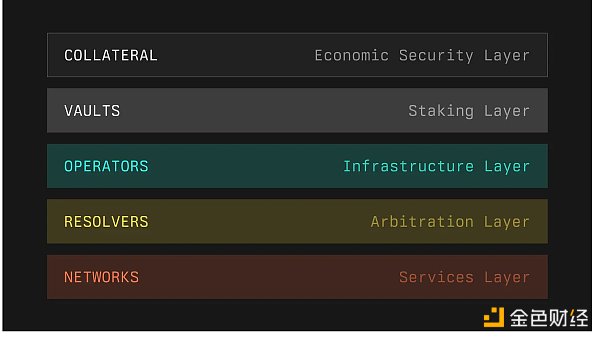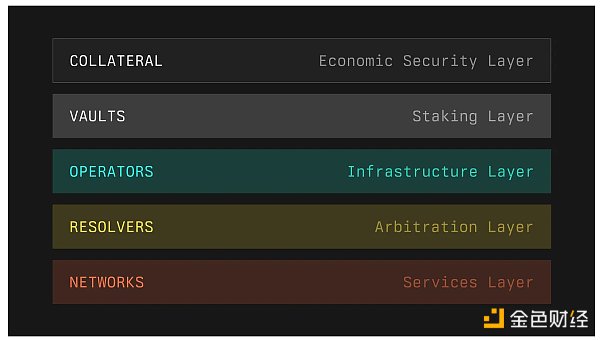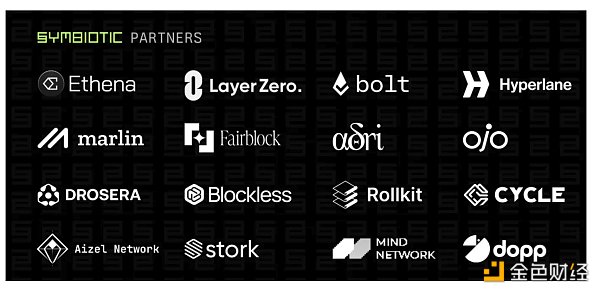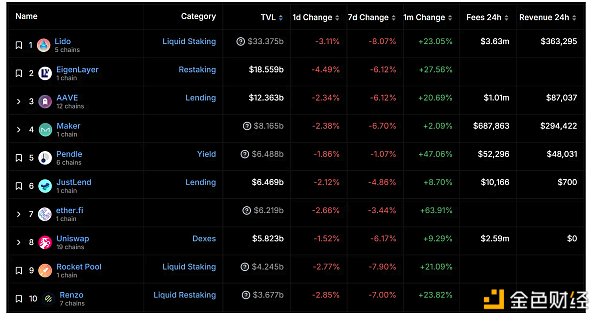Can Symbiotic break EigenLayer’s dominance?

Reprinted from jinse
01/02/2025·3MAuthor: LINDABELL Source: ChainFeeds
Yesterday, the re-pledge project Symbiotic announced its official launch and completed a $5.8 million seed round led by Paradigm and Cyber Fund. According to the introduction, Symbiotic is a permissionless shared security protocol. Shared security means that multiple networks can share the services and security of the same group of node operators, thereby improving capital efficiency and security. This concept has been used before in EigenLayer heavy staking.
Although it belongs to the heavy pledge track like EigenLayer, but unlike EigenLayer, Symbiotic allows users to pledge a wider range of tokens, including ERC20 tokens, Ethereum validator withdrawal certificates, or liquidity provision certificates, etc. Additionally, Symbiotic offers more flexible component customization options. While the core protocol is partially defined by the immutable core contract, other components such as staked assets, reward mechanisms, and penalty criteria can be configured as needed by the network or other agents.

According to CoinDesk reports, Lido co-founders Konstantin Lomashuk and Vasiliy Shapovalov and Paradigm were secretly funding a new project similar to EigenLayer as early as May this year, which is Symbiotic. Interestingly, the report also mentioned that according to several people familiar with the matter, Paradigm expressed investment intention to EigenLayer co-founder Sreeram Kannan, but was rejected. EigenLayer then chose to raise $100 million in funding from a16z. In this regard, Paradigm stated that it will invest in EigenLayer's competitor projects.
**Symbiotic architecture analysis: simple lightweight coordination
layer**
Symbiotic is designed as an extremely flexible, permissionless and reliable thin coordination layer to simplify system architecture and reduce operating costs, while ensuring that the network can efficiently process transactions and execute protocols. According to the Symbiotic documentation, the Symbiotic network architecture consists of five core components that work together to maintain and improve the security and efficiency of the decentralized network.

1) Collateral
Role : Financial security at Symbiotic
Function : In the Symbiotic system, the tokens that users can pledge is a broader concept, covering various on-chain assets, such as ERC20 tokens, Ethereum validator withdrawal certificates, or liquidity provision certificates, etc. Users can stake these assets and convert them into specific pledge tokens, which have extended functionality and can be used for penalties or compensation when necessary.
2)Values
Role : Coordinate and manage the staking and re-staking process
Function : A bridge in the Symbiotic protocol that connects pledged asset holders and Operators who operate network infrastructure. The pledged tokens converted from user pledges will be stored in Vaults, which are responsible for entrusting these tokens to operators in the network to support network operations. Additionally, because Vaults are configurable, they can be deployed in a variety of ways to meet different needs and security considerations. For example, completely unchangeable pre-Configured Vaults (Immutable Pre-Configured Vaults) can provide services for applications that require a high degree of stability and security, while multi-operator service curated Vaults (Curated Multi-Operator Vaults) can be centrally managed. The funds and strategies of multiple operators provide customized services.
3) Operators
Role : Infrastructure provider within the Symbiotic ecosystem
Function: By obtaining staked tokens from Vaults, Operators can ensure necessary financial support for network security and operations. Symbiotic creates a registry to record and track the performance of Operators. Notably, Operators can receive financial support from multiple partners through Vaults without having to build or maintain separate infrastructure for each partner. In the future, Symbiotic also plans to introduce more verification and evaluation systems to enable the Network to select Operators based on their reputation and historical performance.
4)Resolvers
Role : Acts as an arbiter in the ecosystem, responsible for adjudicating and handling economic penalties caused by evil behaviors in the network. It can be an entity or a contract.
Function : There are two specific implementation methods. One is a completely automated method, which is suitable for those evil behaviors that can be clearly proven. The second takes more complex forms, such as the establishment of committees or the introduction of external dispute resolution frameworks. Vaults and Network can work together to select appropriate Resolvers types. Vaults also has the right to set specific terms for Resolvers on how to handle staked tokens. In addition, Resolvers can be shared across networks, allowing multiple networks to use the same Resolvers mechanism to handle potential disputes.
5)Network
Role : Various protocols or platforms that rely on decentralized infrastructure to provide services
Function : Symbiotic allows these networks to obtain the required security guarantees in a flexible way, including technical services and financial support from operators. These Netwroks can customize strategies for recruiting and managing node operators, and independently select cooperative Vaults through Symbiotic's modular design. In addition, the core contracts provided by Symbiotic are open source and unchangeable, ensuring the security and stability of network operations without worrying about external governance risks.

Overall, in the Symbiotic protocol, users will first convert their pledged assets into Collateral and deposit them into Vaults. Vaults will entrust these tokens to Operators according to the set strategy to provide necessary economic resources for the operation of the network. . Operators perform network tasks according to these policies, such as data processing and transaction verification. At the same time, Resolvers play a key arbitration role in the system and are responsible for handling any financial penalties that may arise from the actions of Operators. As the final service provider, Network is responsible for defining and adjusting the interaction rules with Vault and Operators, including how to accept pledges, how to distribute rewards, and how to respond to penalties.
Symbiotic ecology
The Symbiotic system is highly flexible and can support projects at different stages of the decentralization process. For example, the project can cooperate with existing operators at the beginning to build a trust-minimized and decentralized network. It can also achieve ecosystem alignment by expanding the operator cluster in its existing ecosystem and increasing the cost of attacks.
Currently, Symbiotic has established partnerships with 16 projects, including USDe developer Ethena, cross-chain application construction platform Hyperlane, oracle network Ojo, Aizel, which is building a verifiable artificial intelligence network, and full-chain ledger protocol Cycle Network, etc. . Among them, Ethena is integrating Symbiotic with LayerZero's decentralized verification network (DVN) framework to achieve cross-chain security of Ethena assets; the full-chain ledger protocol Cycle Network plans to use Symbiotic to power its shared sequencer; Celestia's Modular Rollup framework product Rollkit is exploring integrating Symbiotic heavy staking into its modular stack to facilitate deployment in Celestia Start a sovereign rollup.

Summarize
DefiLlama data shows that EigenLayer's locked-up amount has exceeded 18 billion U.S. dollars, becoming the project with the largest locked-up amount after Lido, and ranking first in the heavy-staking track. The remaining projects' locked-up amounts have not exceeded 1 billion U.S. dollars. These data all show EigenLayer’s leading position in the entire heavy-staking track. However, the launch of Symbiotic may bring a new competitive situation, especially since it supports heavy staking using Lido's stETH and other assets that are originally incompatible with EigenLayer, which may provide it with an advantage in competing with EigenLayer on TVL. According to Symbiotic’s Twitter, the project reached the pledge limit of 41,290 wstETH within 5 hours.

In addition, as a new project supported by Paradigm, Symbiotic shows broader applicability in terms of technical support and use cases. Paradigm wrote, "In the short term, Symbiotic is mainly used to launch new consensus instances, such as the election of new L1 operators and decentralized sorting. In the long term, Symbiotic will also support use cases such as block production and multi-party computing." And Paradigm Reth Execution Extensions (ExEx) have also been developed to further enhance Symbiotic-based shared security services.
However, EigenLayer has established a solid market position and ecological foundation in the heavy-staking field. It remains to be seen whether Symbiotic can rely on its advantages to break EigenLaeyr's "one-size-fits-all" situation.




